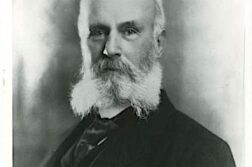An Artist of Spain’s Generation of ’27
 This article is only a portion of the full article. If you are already a premium subscriber please login. If you are not a premium subscriber, please subscribe for access to all of our content.
This article is only a portion of the full article. If you are already a premium subscriber please login. If you are not a premium subscriber, please subscribe for access to all of our content.
0
For posterity, Gregorio Prieto’s works speak for themselves, part of a mythical golden age, capturing the vibrancy of the famed Spanish avant-garde known as the Generation of 1927. Prieto brought an emerging homoerotic presence to the movement that was also present in some of his contemporaries, notably two poets: Federico García Lorca and Luis Cernuda. The Generation of ’27 brought together a rare and exciting constellation of artists, poets, playwrights, cinematographers, and social thinkers—Spain’s answer to England’s Bloomsbury group, Germany’s Bauhaus, and artistic movements of the time such as Dada and Surrealism. These and other schools were thriving until the intellectual life of Europe began to unravel in the maelstrom of World War II.

The Spanish Civil War of 1936–39, a precursor to World War II, took a disastrous toll on the Generation of ’27, what with the assassination of the great poet Lorca, among so many other deaths, incarcerations, and exiles that amounted to a diaspora. In 1937, Prieto showed his works—including the sensual Luna de Miel en Taormina, which depicts two sailor mannequins in a gripping embrace—at the Spanish Republic Pavilion in the International Paris Exhibition, which in itself became a political act.
While today’s non-Hispanic world may not be familiar with that generation’s intellectual and artistic achievements, their contribution to an emerging gay consciousness was tremendous, especially from a Mediterranean standpoint. Prieto’s visual works were rooted in his homeland and studies in France and Italy (as a recipient of the Prix de Rome) and six years of work in Mussolini’s Rome. His paintings and drawings provide a fascinating glimpse into the culture of those pre-Spanish Civil War years, revealing a lively sense of discovery and a surprising degree of tolerance.
Today, to view some of Prieto’s important works you must go to his hometown of Valdepeñas in La Mancha, about 120 miles south of Madrid, where you’ll find the museum that houses the bulk of his works. It was established by the Gregorio Prieto Foundation in 1984. A selection of his more innovative works that were in the old Spanish contemporary art museum, even during the Franco epoch, never made the transition to the nationally visible Reina Sofía Museum of Modern Art in Madrid.
Ken Borelli is a child welfare and immigration consultant based in San Jose, CA.







